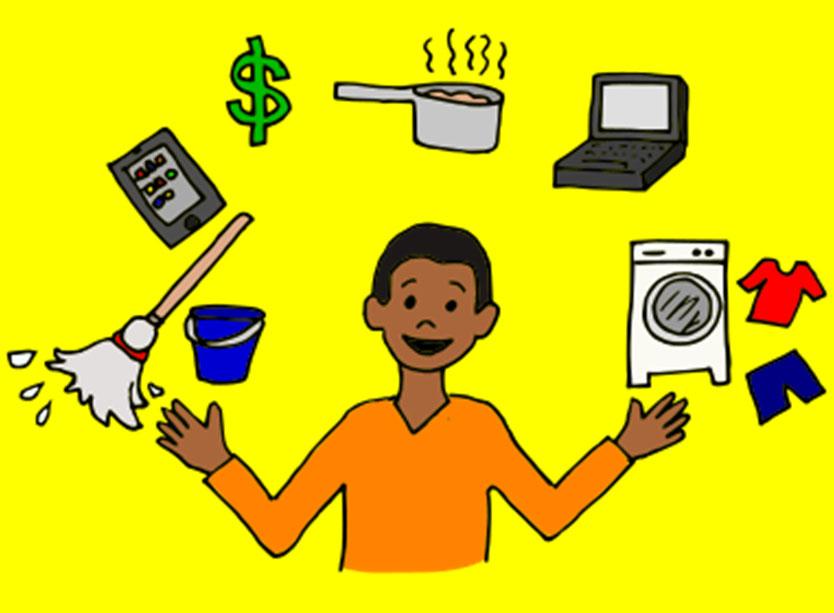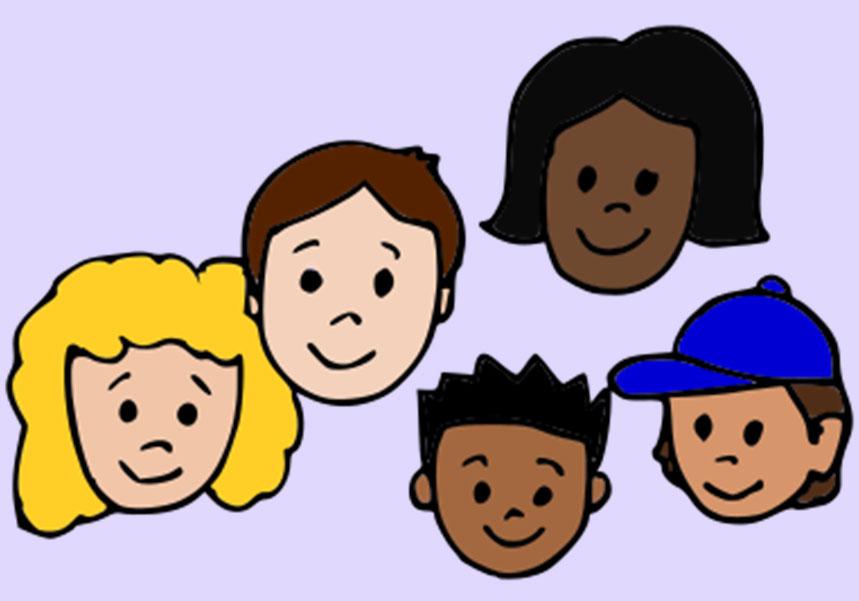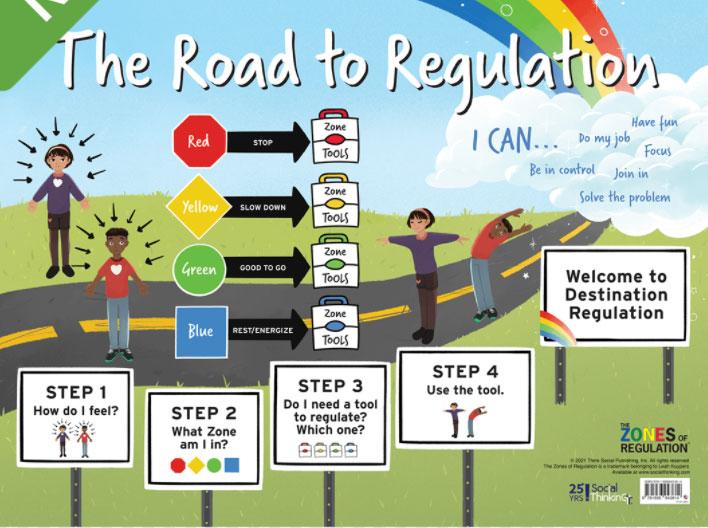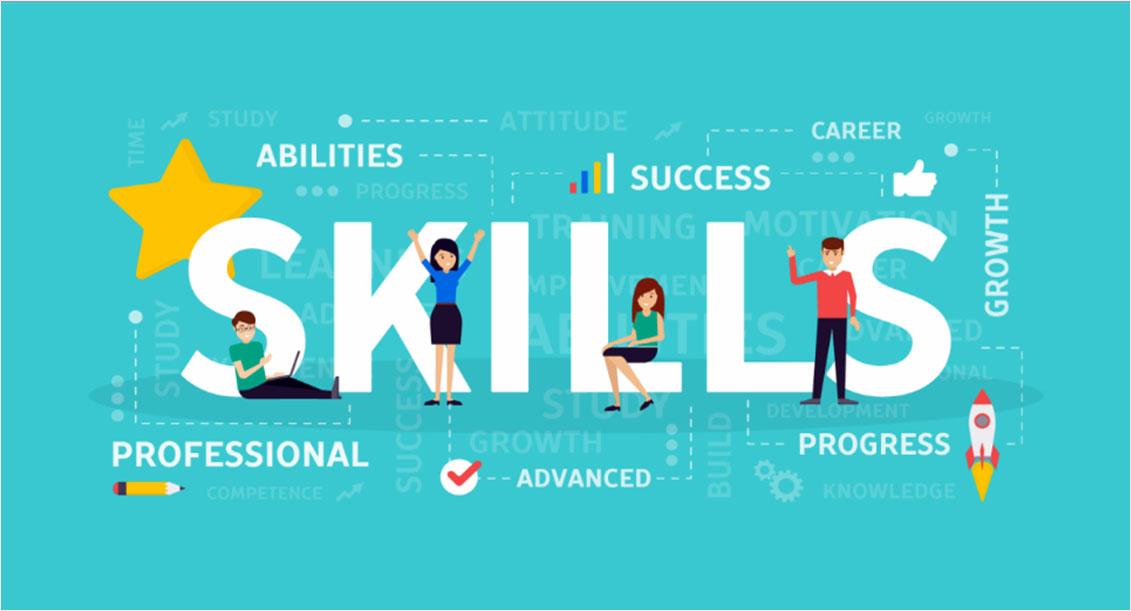_______’s Transition Book
(Your picture here)

1 | Page
School leaver!
For Me (The School Leaver!)
Information for my Support Network
All About Me page 3 Who Am I? ......................................................................................................................... page 4 Who are My Champions? page 6 Dealing With Changes ........................................................................................................ page 8 If I feel worried and I need help page 9 My S.M.A.R.T Goals .......................................................................................................... page 10 Future Brainstorming page 14 My Employability Skills ..................................................................................................... page 15 My Work Experience page 16 How to Be a Great Employee ........................................................................................... page 17 Working Towards Independence page 18 My Calendar ..................................................................................................................... page 19
Index
The Autism Iceberg .......................................................................................................... page 21 Why a Good Transition Matters page 22 What is Transition? .......................................................................................................... page 22 Best practice principles of transition page 23 Tips for Helping Autistic Young People Live Their Best Lives (Strategies)......................... page 24 Importance of strengths and Interests page 25 Tips/Strategies for Emotional Regulation......................................................................... page 27 Transition tips .................................................................................................................. page 29 How Employers can Support Your Young Person page 31 Executive Functioning Tip Sheet ...................................................................................... page 32 Practical Tips and Resources page 33 Resources .................................................................................................................. pages 36‐37 About the Author page 38 2| Page
All about me Hello! My name is __________ I am ______ years old.
Dear Supporters,
This transition book is all about me and my amazing capabilities, strengths, success, dreams and goals for the future as I embark on my next big transition in life, leaving school.
I will share my goals and dreams for the future, what my interests are, what is important to me and all the things I can already do by myself.
This book is for me to help myself with things I can do and learn more, and to help you to learn about me, not do things for me.
I am a remarkable young person with unlimited potential, the only barriers to what I can achieve is what those around me put on me.
I need people around me that are aware of how I learn and provide resources to support me to thrive.
Never put limits on what I can achieve, instead try to learn about my amazing capabilities, strengths, and unique learning style.
3| Page
Who am I?
In this section I will share the things I like, the things I’m good at, things people appreciate about me and the things that people can do to help me succeed. I can complete this on my own or with help.
I like……
My strengths are…..
��
4| Page
What my supporters appreciate about me…….
What you can do to help me succeed……
Be a champion by encouraging me to build resilience, have opportunities for experiences, be patient, provide endless encouragement, and expose me to highly motivating experiences to bring out motivation and discipline.
Support my strengths, develop trust and understanding for neurodiversity.
Alter the environment to support my strengths, abilities, growth, and development. Support me in ways that are meaningful, work in the context in how I think and learn, provide supports that set me up for success.
5| Page
Who are my Champions?
They can be friends, family, people who work with me, anyone who supports me to have a good life!
I am: Contact: Name:____________________ I am: Contact:
am:
Name:____________________ I am:
6| Page
Name:____________________
Name:____________________ I
Contact:
Contact:
“To raise an Autistic child, it takes a community who are knowledgeable, committed and prepared to work together.”
Name:____________________ I am: Contact: Name:____________________ I am: Contact: Name:____________________ I am: Contact: Name:____________________ I am: Contact:
7| Page
Dealing with Changes






Some things to think about:
Be flexible and try different things:
o Remember sometimes things are different, and that is okay.

o “Same Same, but Different” being flexible is a cool thing to do.
Is it a small problem or big problem? Can I fix it myself?
If things don’t work out sometimes, we can do them another time.
Check my diary, schedule or plan.
Use the Zones of Regulation (below) to help guide me to how I can help myself when changes happen. I can complete this with a supporter.
I am: Sad, tired, bored I can:
I am: Happy, Focused, Calm I can:
I am: Nervous, concerned, tense I can:
I am: Angry, frustrated, out of control I can:


See more about the Zones of Regulation on page 27. 8| Page
If I Feel Worried and I Need Help:
REMEMBER:
Feelings come and go Its safe to feel my feelings
Don’t rush, take it easy

9| Page
S.M.A.R.T Goals
As you are transitioning into a new stage of life, it is good to set goals for yourself and your future. S.M.A.R.T goals can help you to know exactly when and how you have achieved your goal. Smart goals are…
Specific Measurable Achievable Relevant Time
Example:
Make sure your goal has details that make it clear what you are trying to accomplish, e.g. “I want to complete a 5km run at the local park” rather than “I want to get fit”
Make sure you use a goal that lets you know exactly when you have achieved it, and how its success can be measured e.g. “greet 5 people at work” instead of “greet people at work” because you can look back and know if you accomplished the goal.
It’s great to dream big, but make sure you are setting up realistic expectations for yourself and set goals that are possible in the not‐too‐distant future, e.g. “save up to travel to Australia” instead of “save up for a trip to the moon”.
Make sure to set goals that are mean something to you as a person, and think why you want to achieve the goal. If you want to run 5k, your goal wouldn’t be to finish a swimming race.
Every S.M.A.R.T goal needs a limit on time so you have a clear expectation when your goal is meant to be achieved, e.g., 1 month, 1 week, 1 day. Instead of “cook dinner for my family more often”, try “cook dinner for my family 3 times in the next week”.
“I will finish writing my CV in 2 weeks’ time with help from my support worker”




“I will cook dinner for my family 3 times this month.”

‐bound
10| Page
_________’s S.M.A.R.T Goals
Goal #1:
What do I need to achieve this goal? E.g. resources, tools, support people etc.
What will achieving this goal look like? Draw a picture!

What are the steps I need to take to work towards this goal? List them below.


11| Page
Goal #2:
What do I need to achieve this goal? E.g. resources, tools, support people etc.
What will achieving this goal look like? Draw a picture!
What are the steps I need to take to work towards this goal? List them below.


12| Page
Goal #3:
What do I need to achieve this goal? E.g. resources, tools, support people etc.
What will achieving this goal look like? Draw a picture!
What are the steps I need to take to work towards this goal? List them below.


13| Page
Future Brainstorming
Use this page to brainstorm any other goals or dreams you have for your future. You can write, draw, glue or tape in anything you want!


14| Page
My Employability Skills
SKILL
Positive attitude
Enthusiastic, willing to work even when it’s difficult
EXAMPLES OF WHEN I’VE USED THIS SKILL
Self‐management
Turn up on time, well‐prepared, don’t put myself or others at risk
Thinking skills
Figure out how to solve problems, think carefully about choices, ask for advice
Communication
Listen well, talk and write clearly, ask if I don’t understand
Teamwork
Get on with everyone, do my part, support my workmates, respect my manager
Willingness to learn
Happy to learn new things, accept feedback on how to improve
Resilience
Able to keep going through hard times, able to ask for and accept help
15| Page
My Work Experience
Do you have any work or volunteer experience? If so, list it here. If not, you could write about what kinds of jobs you would like to do.

16| Page
How to be a great employee

Be clean and tidy at work, wash hands before you start work.
Always try do your best and work really well.
Be at work on time, keep your area clean and tidy, and help others.

Let your Employer know if you cannot make it to work, or you are going to be late.
Know that you have many skills, and are good at many things.
Try hard to improve your skills, so you can always do a great job.
Try hard to find a job that showcases your interests
Saying hello to the people you work with is a nice thing to do.
When It is time to go home, say goodbye to the people you work with.
17| Page
Working Towards Independence
Sit down with a family member or support person and go through the list of tasks. Which do you already do around the house? Which of these could you start doing? How often would they need to be done?
Cleaning my bedroom
Cleaning the kitchen
Cleaning the bathroom and toilet
Cooking a meal
Doing the dishes
Putting clothes in the washing machine
Hanging out clothes
Folding/putting away clean clothes
Changing my sheets
Grocery shopping
Budgeting
Vacuuming the carpet
Mopping the floors
Weeding the Garden
Mowing the lawn
Locking up the house
Can you think of any more tasks you could do/already do? List them below.
From this list you could create your own to‐do list for chores around the house. This is a step towards being more independent as a school leaver as you are entering a new phase of life. Your family or housemates will thank you for it too!

18| Page
My Calendar
Day/Time 8am 10am 12pm 2pm 4pm 6pm Monday Tuesday Wednesday Thursday Friday Saturday Sunday 19| Page
Important Information for Supporters of Autistic Young Adults


20 | PAGE
Understamding Behaviour – Communication
Understanding and differentiating between what you see ( on the surface) and what you don’t see ( below the surface) can help support people understand behavior ( communication) As well has what they can do to help. See below a visual analogy of behavior/ communication. Relate this back to transition out of school and therefore out of normal routine, how this might affect the ‘iceberg’.

21| Page
Why a Good Transition Matters
We make many transitions in our lives. One of the most critical transitions is the move from school into adulthood.
For some students, particularly those with significant learning and social needs, the transition from school is probably the most crucial process for determining how the rest of their lives will unfold. Those supporting young people as they leave school have an obligation to ‘get it right’ and follow best practice. This includes:
allowing the young person to direct the process
involving parents, families and whānau
providing information on post‐school options
transitioning being a coordinated and recognised process with schools, parents, students and agencies working in partnership.
What is Transition?
A transition is a process, not a one‐off event.
During transition an individual student receives support, through planning, to identify and achieve – or move closer – to their career and lifestyle aspirations. This planning is detailed in an Individual Career Plan which covers employment and financial independence, community participation, home and living arrangements, independent mobility, peer relationships, sexuality and self‐esteem.


Source: National Transition Guidelines for students with additional learning needs – https://www.education.govt.nz

22| Page
Best Practice Principles of Transition
There are 10 best practice principles that underpin successful transitions. They are supported by recent New Zealand research and international best evidence. These are summarised below and then translated into action points for educators.
1. The transition from school process should start by age 14 ‐ at the latest. It is part of a specific planning process that aims to maximise academic achievement as well as functional life skills.
2. The student and their family/whānau drive the process.
3. Partnerships are developed between the school and community supports.

4. The transition plan is embedded in mainstream education and community settings.
5. The process identifies and overcomes barriers to the student’s learning and support.
6. The student and family/whānau are offered information and support that opens the door to a wide range of inclusive community‐based options.

7. There is a clear distinction between the needs of the family/whānau and the needs of the student during transition.
8. Develop and practise functional life skills at home and in other natural settings.
9. From the age of 18 students with special needs should receive services in natural community settings.
10. Regularly evaluate the outcomes of the transition planning process.
Source: National Transition Guidelines for students with additional learning needs – https://www.education.govt.nz
23| Page
Tips for Helping Autistic Young People Live Their Best Lives (Strategies):
Simplify your language
Give them ways to cope with sensory challenges
Give them a visual and an oral schedule
Use a calendar to show events, trips, changes
Use written words to communicate during stressful times.
Use “first‐then” strategy
Use the phrase, “the rule is……”
Be consistent, black and white to make sure you’ve been understood
Give choices (e.g. “Do you want to do X before or after Y”)
Purposefully, catch them doing the right thing and praise.
Autistic young people often work best with structure and routine
Use modelling and demonstration of new tasks, with lots of opportunities to practice. This is of great benefit to their independence.
Using visuals and hands on materials will facilitate learning and independence.
Autistic young people thrive and do excellent with instructions if you use less words, most importantly instructions written down so they can keep checking if they get stuck. This is very important as it will reduce the amount of prompting from others.
In different situations, pause and see if your young person can do or remember themselves, if not, check in by saying “Is there anything you need to remember?”. This will also help their independence and help with executive functioning skills such as problem solving, processing and thinking aloud, organization skills etc. (see executive functioning tip sheet page 32)
Give clear instructions and check in, by getting them to repeat or show you their understanding. If they are having trouble with understanding, repeat exact same instruction, use less words, be specific, wait at least 10 seconds for them to process and write it down, or get them to write it down.
They will need to be able to concentrate exclusively on a task, and be aware that it may be challenging for them to have interruptions or distractions.
A checklist (visual and/or simple language) of key steps will help them to remember what is required for each task.
24| Page
Importance of Strengths and Interests
There is increasing evidence that including special interests can be a positive pathway to teaching and learning as well as a successful transition into employment. Other important positive pathways are making connections, teaching about emotions, social communication, flexibility, building on self esteem and confidence, independence as well as increasing motivation.
Special interests for many individuals provide advantages, such as being able to have exellent attention to detail and focus, can concentrate for longer periods, highly motivated as well as having exceptional knowledge about their interests.
Stephen Shore identifies special interests as “a gift… provid[ing] the educator a key towards expanding the life of an individual on the autism spectrum.” As educators, how could you incorporate and leverage the power of your students’ special interests in order to “expand their lives”.
Stephen points out Temple Grandin’s expertise in cattle processing – and how she leveraged her own special interests to pursue a career. She is a prominent proponent for the humane treatment of livestock for slaughter and the author of more than 60 scientific papers on animal behavior. Grandin is a consultant to the livestock industry, where she offers advice on animal behavior, and is also an autism spokesperson.
Many students’ special interests are wonderfully unique: washing machines, leafy green vegetables, and waste management. How can we appreciate the value in these more obscure interests and find creative ways to incorporate these genuine passions into our students’ school days? What about for long‐term employment opportunities?
Many Autistic individuals, have written books about their special interests. Learn more by clicking on the following links.
Dr Shephen Shore ‐ http://projectkeepitreal.com/stephen‐shore Temple Grandin ‐ https://www.youtube.com/watch?v=lWCfkMfcWpk
ASD Gudelines ‐ https://www.altogetherautism.org.nz/information‐hub/resources/asd‐guideline
25| Page
Special Interests cont’d.
Further readings about Special interests and strengths.
Narrative Assessment: A Guide for Teachers and The New Zealand Curriculum Exemplars for Learners with Special Education Needs will support teachers to identify, broaden, and deepen understandings of what students can do and the progress that they make. These resources will help teachers to focus on what their students’ learning looks like when opportunities are maximised and possible learning pathways within the New Zealand Curriculum are identified.
https://www.throughdifferenteyes.org.nz/__data/assets/pdf_file/0010/57925/Narrative‐Assessment_a‐guide‐for‐teachers.pdf
26| Page
Tips/Strategies for Emotional Regulation

Source: https://www.zonesofregulation.com/index.html
Support Strategies for When Your Young Person is Worried
Check they can express why they are feeling worried. Pause and give them time to process this, at least 10 seconds, and give them the chance to respond.
Do they need reassurance about what they are doing?
Do they need you to write down what they are doing?
Do they need help with something?
Is the situation different or new to them? Even good changes can be challenging if they haven’t had time to process.
Is the environment too busy, noisy or bright? If so, they could put headphones on or take a mini break in a low sensory environment.
If they are worried it is best to be their calm person, talk less, positive reassurance that you can guarantee and give them time, so a mini break or leave what you are doing for another time.
27| Page
Support Strategies for When Your Young Person is Feeling Confused
Check to see if today is very different than their usual routine and what can you do to provide certainty?
Is there communication breakdown, for example are they being pressured to talk a lot? Are there too many communication demands?
Are you asking a lot of questions? Questions can be anxiety provoking for many Neurodiverse people, comments are much less demanding.
Write a checklist
Break things down into achievable chunks if doing an activity or job.
Check, can they achieve this right now or do you need to break things down even more. Remember modelling what they can do will be a positive strategy around confusing situations.
When showing them what they can do, check in to see they understand by asking him to show you.
If they are still feeling confused, stop what you are doing and take a break together, give them some quiet time without talking, the less you say the less confused they will be.
Ideas for When Your Young Person is Feeling Overwhelmed
Immediately lower your expectations that may be contributing to them feeling overwhelmed, like doing too many things, trying anything new, being in crowds, expectation of talking to others.
Reduce your language, and lower your voice to a soft tone.
Try modelling taking long, slow deep breaths but don’t expect them to do this until they feel less overwhelmed.
Listen to music, headphones on, drink some water, a quiet low sensory space. Take a break, get some fresh air.
Counting aloud to 10 slowly once they feel less overwhelmed.
28| Page
Transition Tips
There are many ways in which Autistic individuals can be supported. A team of amazing champions in my boys life have contributed to their successful transition through 14 years of school.
Below reflects my top tips for support staff that can help Autistic individuals reach their full potential and experience success at high school and into Employment.
Simplify your language (i.e., reduce the length of phrases and sentences, and choose words that are easier to understand. Instead of “So in a few minutes we’re going to finish this activity, you are going to pack up, then we’re going to start another job …”. Say something like “Nathan, 5 more minutes… activity finished… then another job.”)
Consider and accommodate sensory challenges (i.e., provide quiet spaces, headphones, consider lighting, temperature and background noise).
Provide a visual and an oral schedule (i.e., make a daily schedule visible and talk about it).
Use a calendar to show events, trips, and timetable changes (i.e., have a term calendar visible and refer to it regularly)
Use written words to communicate during stressful times (i.e., having a handheld whiteboard/ pen and paper available can support)
Use “first‐then” strategy (e.g., “First we finish this job/ activity, Then we are going to start the next job/activity (show with visual too.”)
Use the phrase, “the rule is……” (e.g., “the rule is… we ask, when …”).
Be consistent, clear, and direct when you talk (e.g., “In 2 minutes, I want you to stop…”) and say what’s next.
Give me choices (e.g., for a librarian role “do you want to do shelving before or after returns?”).
Catch me doing the right thing (e.g., “Thank you Nathan, I love it when you…”).
Other key factors that have supported Nathan’s success are –
o Motivated
o Compassionate peers/mentors who are excellent communicators
o Receptive to learning about how to support Nathan’s learning style/way of thinking.
An important and really effective support that can help in employment and community activities.
29| Page
Transition tips cont’d.
Planning for all transitions (i.e., ‘little ones’ such as transitioning from break times at work, community activities, and ‘big ones’ such as leaving school, going flatting).
Training and coaching for all staff about Autism in general and also about a student’s specific needs is highly important for building relationships and on the right pathway.
See special interests or passions as vehicles to support learning, career pathways/opportunities, not habits to change or to be eliminated.
30| Page
How Employers can Support Your Young Person
1) I thrive on positive reinforcement, tell me what I can do.
2) I work well with checklist, quiet environments.
3) Give me advance notice of changes to my work schedule.
4) Assistance with filling in employment forms and contracts.
5) I am a visual learner and thinker, so seeing the job rather than telling me is better.
6) I have a great memory, are good with attention to detail, and like to the same job.
7) Once I have done a job many times, I like to learn other tasks too.
8) I like to work with kind people.
9) Use my strengths to build on my work skills, like maths, visual lists, maps, paying attention to small details, and structure. See my profile for more information about my strengths, or talk to my family and other supports that know me well.

10) Verbal instructions that are brief and logical are great for me as I am a literal thinker
11) First and Then instructions are clear. For example,
12) First do the returns ‐ Then tidy the shelves
13) I am very smart but can find it hard to talk to people so you can support my communication skills, by communicating with less words, logical language and give me time to process information.
14) I am good with actions and thought process that are logical such as maths problems, maps, locations, concrete information, and dates.
15) I am a very kind person, and can be very hard on myself, as I like to do things well and hate making mistakes. You can help by reminding me it is O.K to not get things right all the time when we are learning new things.
Thanks for taking the time to get to know my amazing skills, and what I can contribute to the workforce.
31| Page
Executive Functioning Tip Sheet
Here are some important insights, tips & resources from Autistic/Neurodivergent members of our team who know what it’s like to manage executive functioning challenges.
EXECUTIVE FUNCTIONING ISN’T JUST PLANNING, ORGANISING AND TIME MANAGEMENT. It also includes prioritization, problem solving & flexible thinking, working memory, self‐awareness & self‐regulation, task initiation to task completion, attention and self‐advocacy. Many of us Autistic/Neurodivergent people find these things quite difficult.
LANGUAGE & MINDSETS ARE IMPORTANT. Often (young) people who have poor executive functioning skills are labelled disorganized, messy, resistant, under‐achievers, day‐dreamers, manipulative or disruptive. But they are really just young people who lack skills to be able to carry out certain functions without meaningful support and understanding.
ANXIETY AND EXECUTIVE FUNCTIONING ARE INTERCONNECTED. When your anxiety goes up, your executive functioning capability goes down and with it, your performance. This reduces your confidence and your motivation, which can create a downward spiral unless support is put in place. Reducing anxiety for your young person ‐ through things like sensory accommodations and clarity around expectations, for instance ‐ is central to supporting their executive functioning capability.
BE THAT SAFE PERSON. Your young person/student might feel confused, frustrated and embarrassed that everyone else around them seems to have solid executive functioning skills and they do not. You are more likely to be able to help if the young person trusts you, feels safe and does not think you’ll judge them.
DEVELOP A COLLABORATIVE PLAN. Work with your young person on the plan. Quick, simple changes that can be implemented every day are likely to be more effective than something that takes two weeks to learn, but the young person gives up before it becomes a habit. It should be a team effort; the young person doesn’t necessarily have to make all the changes. Start with what is getting in the way the most, or where the young person wants to start.
CONTINUE TO SEEK OUT AUTISTIC & OTHER NEURODIVERGENT VOICES. Executive functioning and its impact on daily living and sense of self are common themes among Autistic/Neurodivergent authors, bloggers and vloggers (see next page). Seeking out these insights will not only help you understand and support your young person more effectively, it will help reassure your young person that they are not alone.
32| Page
Practical Tips & Resources
AT SCHOOL:
Encourage students to ask for help ‐ both by explicitly stating that it’s okay to ask for help when you are stuck but also modelling this in class
Help your student develop a plan for when/how/who to ask for help, e.g. “If I’m not sure how to start after X minutes, I will ask my teacher for help.” This can help prevent the student from internalizing “I can’t do this. There’s no way forward.”
If possible, provide two sets of books/materials for your young person/student: one for the classroom and one for home.
Make all assignments, handouts and instructions available online in a clearly marked, accessible place, such as Google Classrooms
Check in frequently but discreetly to ensure that the student understands the assignments/ expectations.
Break down projects or assignments into smaller, more achievable steps.
Help your student visualize what “done” looks like for a project or assignment and work with them to determine the steps needed to get there (see details here).
33| Page
Practical Tips & Resources cont’d.
AT HOME:
Very gradually, and in terms they can understand, introduce your young person to the different components of executive functioning. Help convey that these are skills they can develop and strengthen over time, i.e. these might be skills that they haven’t developed YET, not skills that they will never possess.
Gently work out together which arenas they are having most trouble with. Then collaborate on potential solutions.
Many of us with executive functioning challenges might have trouble making decisions ‐ we don’t have the inbuilt skill to “know’ the process”, or even that there is a process.
You can help your young person develop this skill by planning and problem solving out loud. Discuss with your young person what you take into account when you make decisions. Show them how you readjust your plans when the situations change so they can learn not everything goes well all the time and we all are constantly planning and changing.
Emotional regulation can also be difficult for young people with executive functioning challenges. Interoceptive awareness can also be a key part of helping a young person learn to self‐regulate. See these stellar resources for primary and secondary students.
Involve your young person in planning activities, outings and projects they love so they can practice the skills and success.
For practical tips from Autistic young adults directed at younger peers, please see our complementary tip sheet, “Getting Things Done”.
34| Page
Practical Tips & Resources cont’d.
ADDITIONAL INSIGHTS & RESOURCES (NOT EXHAUSTIVE)
From Understood, A Day In The Life of A Child With Executive Functioning Issues
From Positive Partnerships, Executive Functioning
From Seth Perler, The Holy Grail: Executive Function
From Lives in Balance/Dr Ross Greene, Assessment for Lagging Skills & Unsolved Problems
From Amythest Schaber, Ask An Autistic #25: What Is Executive Functioning
From Autistic teen Quincy Hansen, Task Initiation, Executive Functioning & Autistic Inertia
From Cynthia Kim of Musings of an Aspie, Executive Function Series
Resource: www.icannetwork.com.au
35| Page
Resources
Myway Employability (for more information see my profile) mywayemployability.com.au
https://www.autismcrc.com.au/news/webinars/myway‐employability‐launch
Emotional regulation
https://zonesofregulation.com/index.htm
Enabling good lives
https://www.enablinggoodlives.co.nz/about‐egl/
National transition guidelines
https://www.education.govt.nz/school/student‐support/special‐education/national‐transition‐guidelines‐for‐students‐with‐additional‐learning‐needs/national‐transition‐guidelines/
Support with employment
https://www.workandincome.govt.nz/work/health‐and‐disability‐job‐support/index.html
Understanding Autism and Neurodiversity
https://www.youtube.com/watch?v=RbwRrVw‐CRo
Ministry resources
https://abilityministry.com/resources/
MyWAY Employability
https://www.mywayemployability.com.au/
Transition tips
https://parent2parent.org.nz/school‐transitions/
Secondary school, I.I.Ps / transition planning
https://parent2parent.org.nz/school‐transitions/
LifeLinks
https://www.lifelinks.co.nz/
Narrative assessment
https://www.throughdifferenteyes.org.nz/__data/assets/pdf_file/0010/57925/Narrative‐
Assessment_a‐guide‐for‐teachers.pdf
Autism New Zealand
https://autismnz.org.nz/
36| Page
New Zealand Autism Spectrum Disorder Guideline Summary
https://www.altogetherautism.org.nz/information‐hub/resources/asd‐guideline/?gclid=EAIaIQobChMI98LWuKLo‐AIV1QkrCh0oQwnuEAAYASAAEgJgvvD_BwE
Be your best academy for Neurodivergent adult students ( post school online courses)
https://www.beyourbest.academy/ ihc courses, library and support https://ihc.org.nz/
Supported living payment
https://www.workandincome.govt.nz/products/a‐z‐benefits/supported‐living‐payment.html
Recreate youth holiday programs and education
https://www.recreate.org.nz/
Autism Education Resources – Resources on FCD™ and the DIR Model
https://profectum.org/resourceold/educators/?gclid=EAIaIQobChMI6tXqz4i4‐gIVLdWWCh1CiQmDEAAYASAAEgInWfD_BwE
Adopting a Strengths‐Based Approach to Autism
https://www.researchgate.net/publication/337228747_Adopting_a_Strengths‐Based_Approach_to_Autism
The benefits of special interests in autism
https://www.spectrumnews.org/features/deep‐dive/the‐benefits‐of‐special‐interests‐in‐autism/
Eight Strategies to Support Positive Transitions for Children with Autism
https://www.friend2friendsociety.org/eight‐strategies‐to‐support‐positive‐transitions‐for‐children‐with‐autism/
37| Page
This book mentions strategies and tips for Autistic individuals, but can also be relevant for any Nurodivergent person.
Bridget Carter – Mother of 2 Autistic Adults

Bridget Carter is a mum passionate about a strength‐based approach to Autism. Since her eldest son was diagnosed with Autism at age 3. Now, after 21 years researching, studying and working in the Autism community, Bridget brings her learnings to this book.
Bridget knows personally, that every single person is different ‐ if you have met 1 person with Autism, you have met 1 person.
With a background in early childhood education and experience supporting many diverse learners, Bridget brings a unique perspective to teaching and learning about Autism.
Bridget has also been a writer and presenter for an innovative Narrative assessment project, Tips for Autism, and has recently written her own Parent story, that she is presenting to Educators, Support staff, and Whānau about transition success.
Bridget has also contributed to a teacher education textbook (“Inclusion in Action 6th Edition”) about her parenting and schooling experiences in relation to communicating with autistic children. Her focus is very clear ‐ a strength‐based model of teaching and learning is life‐changing.
Recently Bridget has been a Connector working with Enabling Good lives (Christchurch, NZ). This role involves working alongside ORS (Ongoing Resourcing Scheme) students, their Whānau (family), community, school, and supports with transitions from school.
Bridget has also been a National educator for Autism New Zealand and has recently given up this role to focus on her book and her youngest son’s biggest transition of his life, leaving school.
Bridget has also supported many other families, particularly with realising they are not alone, to give them hope and that there person is an amazing unique human being.
Bridget’s huge drive, passion and dedication for Autism comes from her own personal journey with her 2 sons that she describes as been given the biggest gift in life.
She brings a unique perspective both professionally and as a parent. Bridget describes focussing on her own son’s strengths and interests and unique learning style has been a great success to breaking down many barriers.
Bridget’s book, Transition Success was originally written for both her younger son and readers that are supporting him, including future Employers.
This idea has come from many years of having to tell her story over and over. Having to explain to others about her children and how they learn, that they are capable and have huge potential when others focus on their strengths
what they can do and what motivates and inspires them. This approach to understanding how they learn helps to support them to thrive.
This book has been a huge success for my younger son as he has a big team of supporters (champions) in his life. These champions work in education and provide support at work and during leisure activities.
This book is unique in the way that it is written. That is, for the Autistic person, their family and support networks to engage with and learn from. Ultimately, this book is about providing hope and opportunities for all Autistic children, youth and adults.
This book has been co-written with a friend of mine who is proudly ADHD and was diagnosed in her last year of her Speech and Language Therapy degree.
–
38| Page
















































